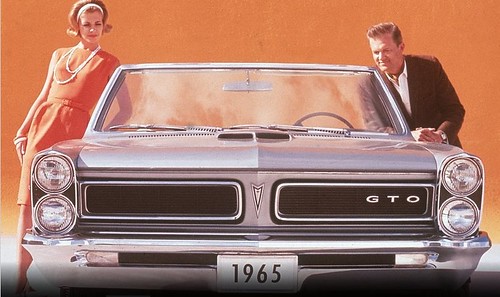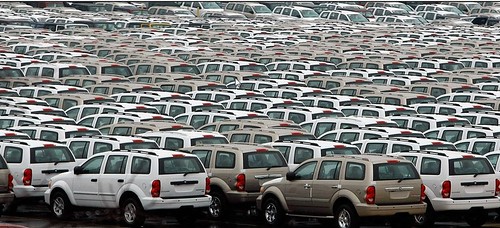The Greatest generation, beaten generation and the blank generation and urban revival
I have spent about 10 years as a heavily involved urban advocate, specifically in DC, starting with land use, realizing the value of historic preservation, moving into commercial district revitalization and then recognizing the primacy of the importance of transit. As a person committed to good government, civic engagement, and participatory democracy I care about that too. And about the quality of and the knowledge that undergirds our participation in local civic affairs.
When I first came to DC I worked for a consumer group that had Nader lineage, so I spent a fair amount of time thinking about and observing the process of effecting social change. (In college I also became enamored with the field of organizational development.) And I also learned about marketing, direct marketing, social marketing, and publishing. (And I had begun learning about community organizing in college.)
All this and more (including a childhood off and on spent living in Detroit, then its suburbs), every place I visit, every book and report I read, every conference or meeting I attend, and every planning process I am involved in has shaped my thinking.
I spend a lot of time thinking about organizations and processes and structures and systems, with the belief that strong systems yield, albeit not uniformly, superior outcomes. And I think a lot of time about the difficulty of working to effect change, and the frequent failures to do so.
For many years, I've said that the problem in many neighborhoods is a leadership deficit, and backwards looking leaders. Sometimes I call this a problem of legacy leadership, which is often stultified and fails to think broadly and about the future.
Neighborhood involvement is typically focused on keeping things the same, especially if things are relatively good, but even if they are not.
So my shorthand thinking about the state of organizing and involvement in DC at present is organized along this typology.
1. Greatest Generation or Legacy Generation (using the term from the title of Tom Brokaw's book)
These are the people, including the beginnings of the historic preservation movement, who stayed in the city or moved to the city during the many decades that the city declined, when living and commercial trends favored the suburbs and when businesses and residents abandoned the city (even without riots or desegregation) as part of these trends.
These people saved the great urban qualities of the city, especially through the use of historic preservation policies, and stabilized the city when it was shrinking in population.
But they definitely are shaped by the automobile and don't see their way towards more urban optimal mobility methods.

A 1965 Pontiac GTO unveiled at an automobile show. Photographer unknown.
2. The Beaten Generation (using the title from the song "The Beat(en) Generation" by The The) is my generation, probably people in their 30s and 40s and 50s, people who have been working on community issues for awhile.
For the most part, while pro-urban, most of the people in this cohort are shaped by the suburban development and planning paradigm. They think uses should be separated and that people for the most part do and/or should travel by car. Even though they live in the city, they think auto first. But they may use the subway system even if they can afford to own a car...

(Chip Somodevilla/Getty Images)
Given my music references, you can tell this is my generation. But for the most part, people make distinctly nonurban choices, especially concerning local land use and transportation decision making, because they don't understand how deeply imprinted they are by suburban-appropriate (a/k/a urban-inappropriate) decision making structures and paradigms.
Some of the people in this generation are fully happy to reap the benefits of the hard work of the Greatest Generation while denigrating and not understanding their contribution. (To this I attribute some of the opposition to historic preservation.)
3. The Blank Generation (based on a song entitled BLANK GENERATION by Richard Hell and the Voidoids) are the younger people of today, in their 20s and early 30s up to 40, enamored of technology and technocracy and thinking they know everything (I probably had this problem when I was that age, but I always paid attention to evidence and had and have a kind of academic approach to knowledge and objectivity), but often lack the wisdom and the depth to really know what they are talking about, and therefore provide incomplete if not "crippled" solutions when they offer/write solutions. The jury is out about the maturation process.
(This is the age group of many in the current municipal government administration in DC. Us old people are out of luck.)

Labels: car culture and automobility, change-innovation-transformation, civic engagement, sustainable land use and resource planning, transportation planning, urban design/placemaking, urban renewal



0 Comments:
Post a Comment
<< Home